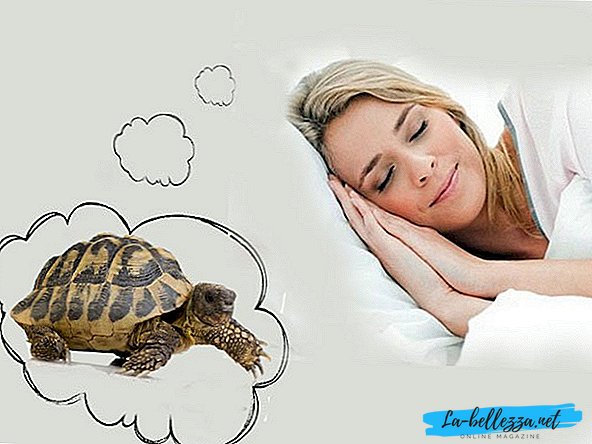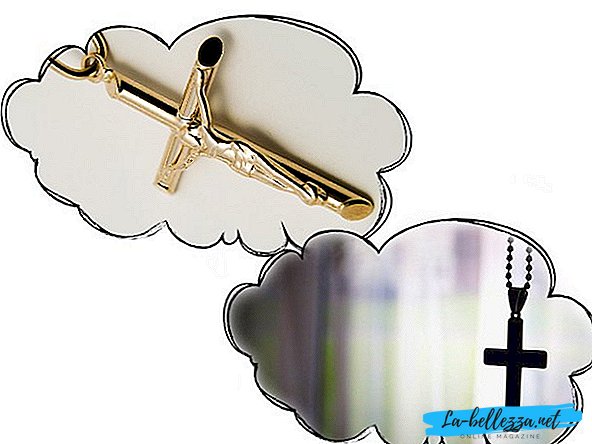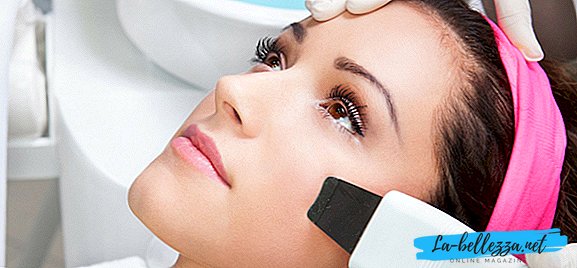
Skin imperfections need to be addressed in a comprehensive manner, providing cleansing, nutrition and care. Facial cleansing is an effective cosmetologist's weapon in the fight for the beauty of the client.
The most popular methods of cleaning are: manual, vacuum, laser and ultrasonic. With any, even the most gentle cleaning, the upper layer of the skin suffers. If, after the procedure, the proper care is not ensured, an undesirable reaction and complications may occur.
Facial skin care after cleaning

Each organism reacts differently to external stimuli. The keratinized upper layer to some extent protects the skin from harmful external factors. After active cleansing of the face, the skin becomes more sensitive and, at first, cannot withstand the effects of irritants.
In order to face cleansing did not give complications, you need to follow the general care recommendations:
- In the first 24 hours after the procedure, it is recommended not to touch the skin or expose it to chemical or mechanical stress. During this period, the face is especially sensitive to any factor;
- It is not necessary to clean the skin with alcohol-based remedies, as they strongly dry the skin and cause discomfort during the rehabilitation period. Alcohol can only treat local areas for disinfection, such as sores or acne;
- During the rehabilitation period it is recommended to rinse your face in a decoction of medicinal herbs. It is better to use soothing mixtures with: chamomile, calendula, plantain, hunter, etc .;
- The next few days after the procedure is recommended to wash your face only in water with the addition of lemon juice or vinegar. It is more useful to replace ordinary water with mineral or melted water. In tap water there are a lot of impurities that can become an additional irritant for the face;
- After cleansing, the skin needs intensive moisturizing, so the cream should be applied 1-2 times a day;
- Several times a week do nourishing and soothing face masks. It is best to use not purchased, but homemade masks. It is better to add fruit pulp, chicken yolk, honey, etc. to the mixture.
If you follow these rules, then after active exposure to the top layer of skin, your face will not feel stress and will recover faster. Below are more detailed recommendations that correspond to the method of cleansing the face.
After mechanical cleaning

Mechanical (manual) cleaning faces is an effective method of combating open and closed comedones. The procedure has a number of pros and cons, which must be considered before the procedure.
With its obvious effectiveness, the method is quite traumatic. There may be scars that will be more difficult to cope with than acne. Only an experienced cosmetologist will provide safe cleansing.
After the procedure, you should follow a numberrules:
- After cleaning, an infection can get into open wounds, so you need to follow the rules of hygiene. It is possible to touch the face only in extreme cases; a large number of germs that can penetrate the skin accumulate on the hands for the whole day;
- During rehabilitation it is necessary to make compresses from soothing components. You can also wipe your face with ice cubes. This will help to narrow the vessels, get rid of swelling and redness;
- In order to get rid of fat on the skin, it is necessary to use lotions without alcohol content or a solution of chlorhixidine digluconad;
- Problem areas need to be treated twice a day with Metrogil gel. For faster healing, it is recommended to use aloe juice or products based on it;
- In order to reduce sebum secretion and speed up tissue regeneration, it is worth making a mask of cosmetic clay;
- Do not use scrubs and brushes, as this injures sensitive skin. Also, the first day is better not to use tonal means;
- A couple of days after the procedure it is better to refuse to visit the baths, saunas and swimming pools, as well as to eliminate the active tan and tanning beds.
With proper care, the skin is restored within 5-7 days.
After ultrasonic cleaning

Ultrasonic cleaning of the face is a painless procedure that includes the minimum period of rehabilitation. Compared with manual and vacuum, hardware cleaning is considered more gentle.
Before cleansing, the skin does not need to be steamed out, which greatly simplifies the procedure, saves time and reduces the risk of infection in the tissue. The hardware procedure cleanses the pores from dirt and sebum, from dead skin cells and blocked sebaceous glands. Ultrasound cleanses the skin without stretching, squeezing and breaking the epidermis.
Skin care after ultrasonic cleaning is quite simple, just follow the following instructions. rules:
- Do not wash your face for 24 hours after the procedure;
- Do not use tap water, only mineral water. Use cleansers that do not contain alcohol and have a neutral pH;
- To remove sebum, wipe the face with tonic and lotion (also without alcohol);
- Several times a week to do homemade masks that relieve inflammation and swelling. The following ingredients are recommended: clay, raw potatoes, oatmeal, honey. Cooked masks can not be stored for more than a few hours, so before each procedure you need to prepare a fresh mixture;
- Use sunscreen with a high SPF factor. Direct sunlight will cause pigmentation on the skin.
With proper cleaning and hygiene, the procedure does not cause complications.
However, there are a large number of contraindications to its use. Before ultrasonic cleaning, it is necessary to consult a doctor.
After vacuum cleaning

To clean the skin using this method, an apparatus is used that creates the effect. vacuum. A drainage pipe is applied to the face through which the impurities on the face are drawn. The procedure lasts no more than 30 minutes and is considered painless. By its action, vacuum cleaning is similar to mechanical cleaning, but it has its pros and cons.
During the procedure, skin metabolism and blood circulation are improved with the help of a vacuum. Cleansing does not take much time - about 20 minutes. But, compared with the manual procedure, cleaning will not provide deep cleansing from comedones and miliums.
In order to speed up the rehabilitation period after cleaning, you need to be guided by the following rules:
- Provide nutrition and hydration of the skin. It is necessary to use creams and homemade masks daily. It is necessary to choose means according to skin type and age;
- Protect your skin from the sun, using creams with an SPF factor. If necessary, you can use Panthenol;
- In the first couple of days after cleaning, it is better to discard tough scrubs and peels;
- It is also best not to injure your skin by visiting a bath, sauna or solarium.
Vacuum cleaning of the face is an effective procedure that is useful even to those who do not suffer from acne and enlarged pores. In order for cleaning to give only a positive result, you need to take care of the absence of contraindications.
After laser cleaning

Laser face cleaning - This is an effective procedure that is completely painless.
With the help of a laser apparatus, a beam of desired purity and temperature is adjusted, which, when it hits the dermis, cleans it deeply and permanently. The damaged skin layer is removed completely, eliminating problems such as age spots, acne, comedones, etc. Also, the procedure has a rejuvenating effect: the “crow's feet” under the eyes are reduced, small wrinkles are smoothed and other signs of aging disappear.
The recovery period after cleaning is small. In the absence of unforeseen complications, after 4-5 days all traces of the intervention disappear. A few days after surgery must be followed.recommendations:
- Limit your stay in bright sunlight, wind or frost. External stimuli can reduce the effect of cleansing;
- You should not visit the bath, sauna or solarium, as high temperatures during rehabilitation especially harm the skin;
- It is recommended to moisturize the skin with a cream or mask;
- Eat as many vitamins as possible.
Just a week after laser cleaning, the skin will look much prettier, cleaner and younger.
What should not be done after cleaning the face?

In order not to harm the skin immediately after cleansing, it is necessary isolate yourself from seven things:
- Baths and saunas. If the face was steamed before the procedure, then additional heating and sweat that will come out in the process will get wounds, which can cause inflammations;
- Face massage. After cleansing, do not expose the skin to additional mechanical stress. Redness and smudges may form on the face. Also, the skin may remain in the deformed state and the cells will experience stress;
- Washing up Tap water and chemicals used for cleansing dry the skin and play the role of an additional irritant;
- Pilling After cleansing, the skin has already lost the stratum corneum, so using them for several days is simply not necessary. Pilling and scrub have an intense irritating effect on the skin, which should be avoided during rehabilitation;
- A tan. After the procedure, the skin remains vulnerable cells that are easily burned by direct sunlight;
- Squeezing acne. If after the procedure there are rashes or new ones are formed, in no case, do not squeeze them out. The infection will definitely fall into open wounds and they will only become larger;
- Makeup. After cleansing, you should allow your skin to breathe, especially in the first 24 hours after the procedure.
If you do not violate this list of prohibitions, then the result from the procedure will only be positive.
Side effects

The greater the effect on the skin, the more possible complications. Therefore, the main side effects appear after manual therapy.
After cleansing, on the skin most often arise:
- Redness If the procedure is correct, the redness will fall off on its own within a few hours;
- Red spots. The causes of this effect may be different. Most often this occurs due to damage to the vessel or from a lack of moisture in the body;
- Acne. They can occur if during the procedure the infection was carried. Most often occur during manual or vacuum cleaning. Also, new rashes may occur if contraindications were ignored. For example, bronchial asthma, dermatitis, menstrual cycle, etc .;
- Edema. If after the procedure the face swells up a little - this is a normal reaction that takes place the next day. Otherwise, large edema can cause an allergic reaction. You must consult a doctor;
- Bruises or bruises. They appear as a result of mechanical damage, often after manual or vacuum cleaning;
- Burns This adverse reaction can occur after inept laser or ultrasonic face cleaning. Also, the cause may be individual intolerance;
- Allergic reaction. Each organism is unique, therefore, hypersensitivity to the preparations used in cleaning is not excluded.

Most side effects disappear within a few days after the procedure. Worth sound the alarm and go to the doctor, if a:
- On the skin appear areas of bright red. This is due to a chemical burn;
- Small purulent acne and itching on the skin. The main cause of these symptoms is intolerance to the products used in the process, as well as allergy to sunscreen;
- If too fatty agents were used in manual cleaning, then subcutaneous acne can be formed, which is very difficult to remove.
If there are complications, you should not postpone the visit to the doctor, since the more time passes, the more difficult it is to resolve the situation.
How to avoid side effects and negative consequences?

To avoid adverse reactions, first choose good specialist. The cosmetology room should be equipped with materials and equipment that ensure the sterility of the procedure. Do not use the services of a beauty salon that offers a price much lower than the market.
It is necessary to follow all the necessary recommendations for care after cleaning the face, and not to violate the prohibitions. Special attention should be paid to moisturizing the skin and protecting against external factors.
Before the procedure you need to check your health for availability contraindications:
- Exacerbations of skin diseases;
- Increased skin sensitivity;
- Asthma;
- Diabetes;
- Hypertension;
- The presence of wounds or lesions on the skin, as well as papillomas and burns;
- Cuperosis;
- Decrease in a tone and deterioration of a turgor of an integument;
- Menstrual cycle;
- Pregnancy and lactation.
The number of contraindications depends on the method of cleansing the face. Before choosing, be sure to consult a cosmetologist who will select the procedure that is suitable for your age and skin type.











